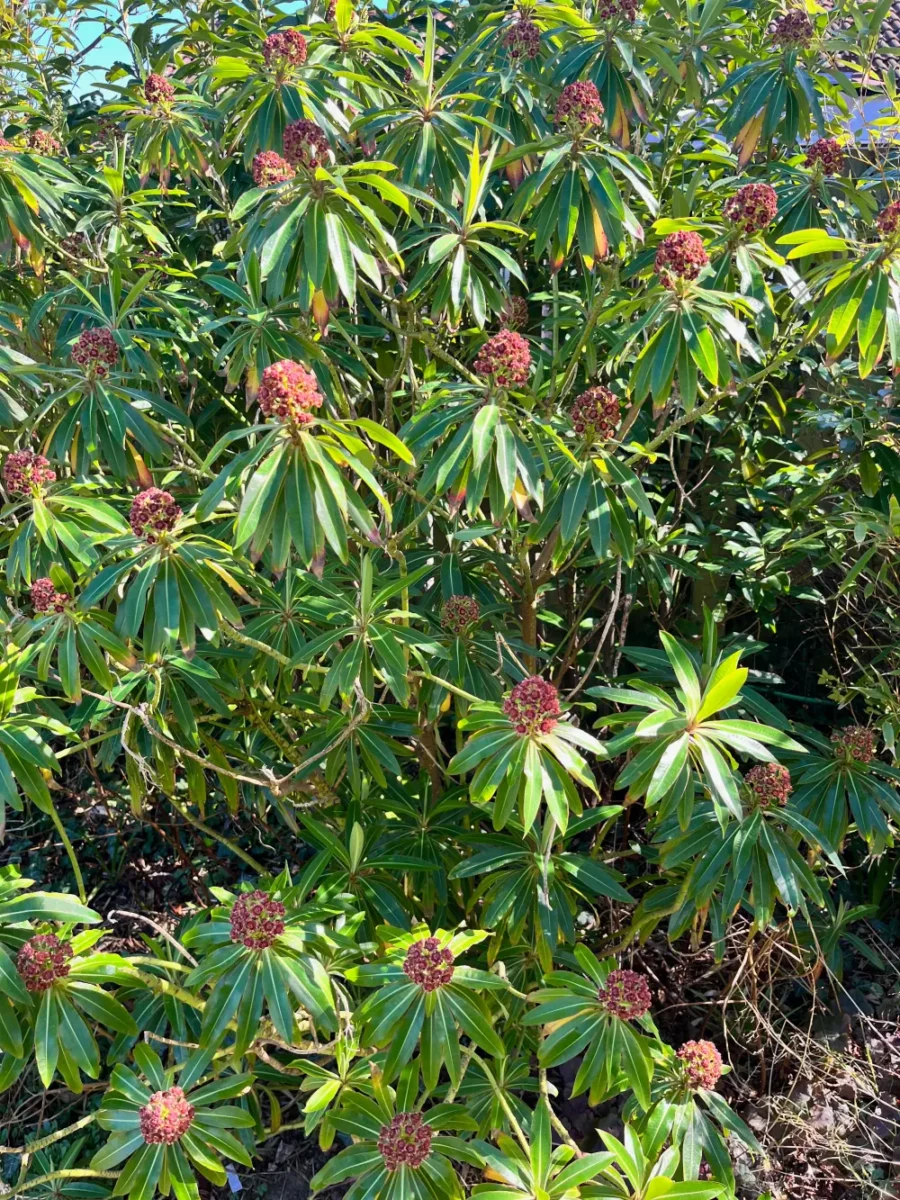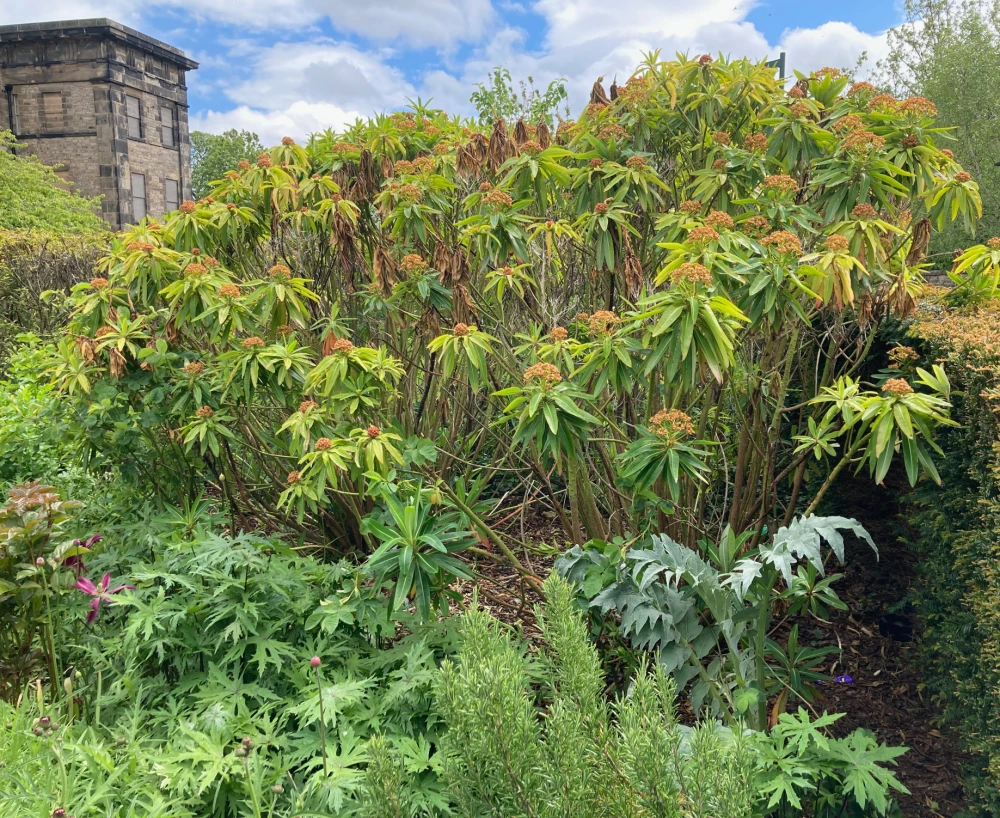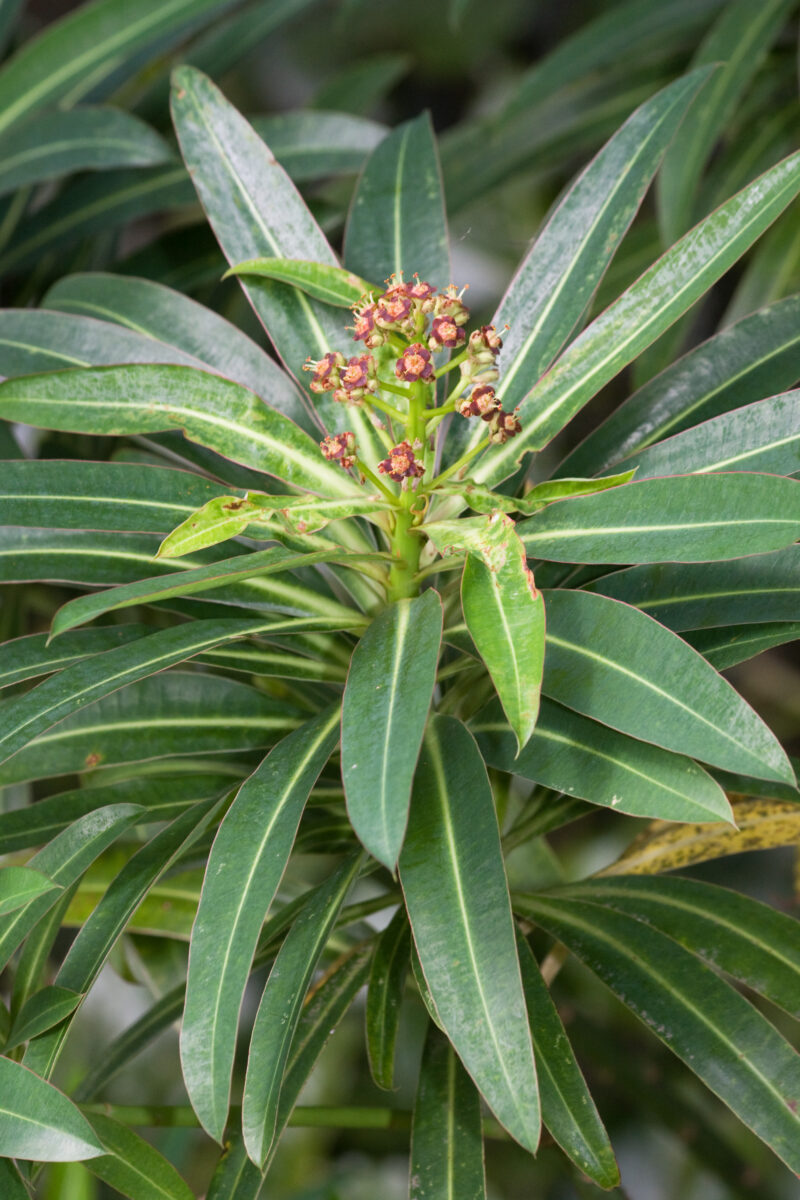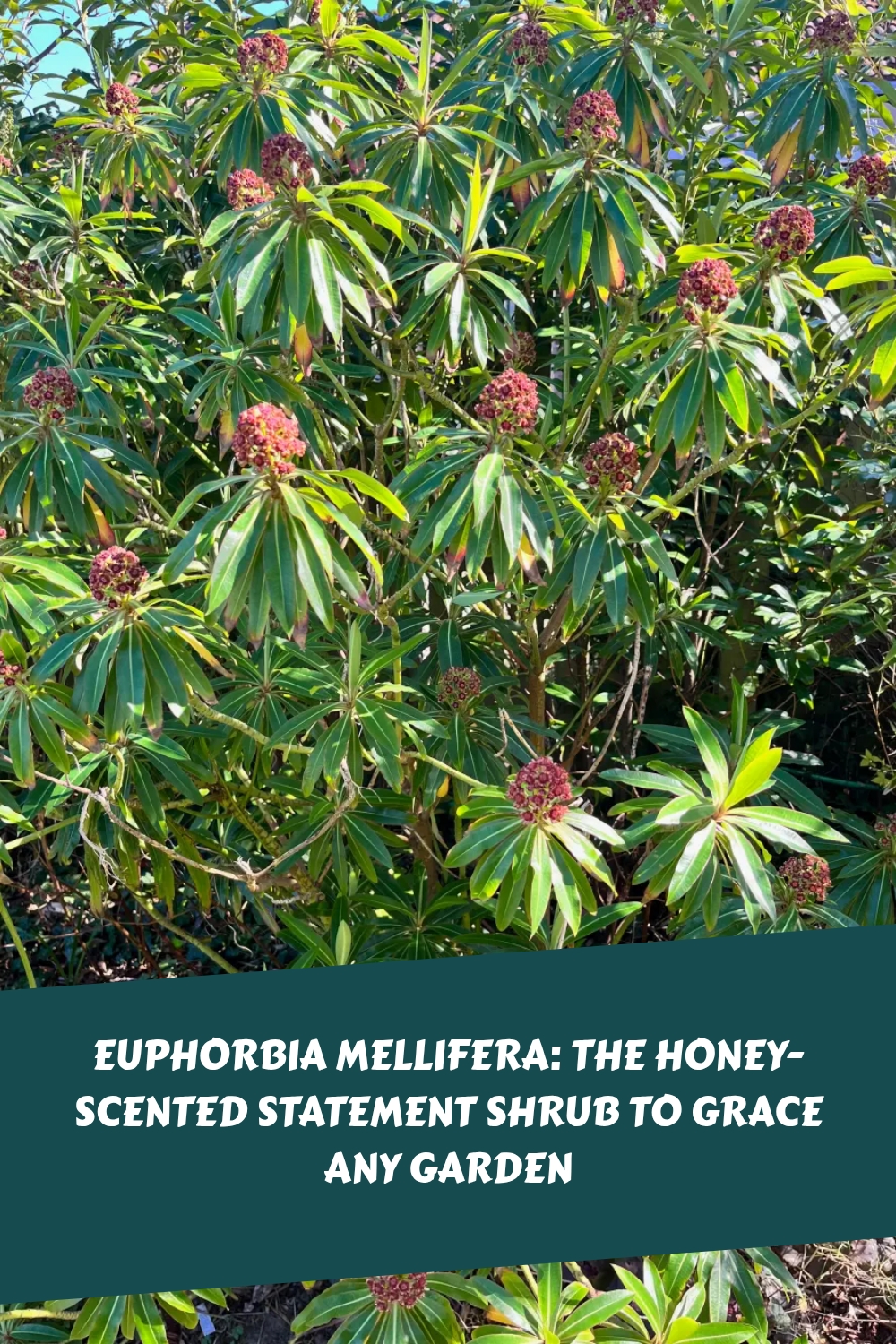
Euphorbia mellifera, also known as Honey Spurge or Canary Spurge deserves a special place in the spotlight in my view. It is one of my absolute favourite garden plants and one I grow whenever I can.
From its rich scent and striking foliage to its impressive architectural shape, Euphorbia mellifera is a must-have for any garden that can accommodate its needs.
Let’s dive into what makes this plant so special—and how to grow it successfully in your garden.
What is Euphorbia mellifera?
Euphorbia mellifera is a domed evergreen shrub that brings both visual and olfactory appeal to the garden. With its bright green, narrow leaves that boast a pale mid-vein and often a red-tinged edge, it offers year-round interest even when not in flower.
But what really sets this plant apart are its flowers—which start as a yellowy-orange and mature into a rich reddish-brown. These appear in late spring, and if you walk past them on a sunny day, you’ll be delighted by their sweet honey scent, hence the common name Honey Spurge.
Key Characteristics at a Glance
| Feature | Details |
|---|---|
| Common Name | Honey Spurge / Canary Spurge |
| Scientific Name | Euphorbia mellifera |
| Synonym | Euphorbia longifolia Lam. |
| Plant Type | Evergreen Shrub |
| Fragrance | Sweet, honey-scented flowers |
| Height & Spread | 1.5–2.5 metres tall and wide |
| Growth Time | 5–10 years to reach full size |
| Hardiness | UK H3 (-5°C to 1°C), USDA Zone 9b–11 |
| Drought Tolerance | High once established |
| Light Requirements | Full sun |
| Soil Type | Chalk, loam, sand |
| Soil pH | Acidic, neutral, or alkaline |
| Exposure | Sheltered positions preferred |
| Flowering Time | Late spring |
Why I Love It: A Gardener’s Perspective
Euphorbia mellifera is a that brings multiple seasons of interest to the garden.
Even when not in bloom, the foliage is attractive and it’s lovely domed shape gives structure to your planting, and it contrasts beautifully with finer or more architectural forms.
Then there’s the honey scent. It’s subtle, not overpowering, but noticeable enough to stop you in your tracks during a spring stroll through the garden.
It’s one of those plants that adds a real sensory experience.
Growing Conditions
Light
This plant thrives best in full sun, which helps it develop stronger growth and more prolific flowering. It can tolerate some light shade, especially in warmer climates, but sun exposure really brings out the foliage colour and flower scent.
Soil
Euphorbia mellifera isn’t especially fussy about soil type. It will grow happily in chalk, loam, or sandy soils, as long as the soil is well-drained. Poor drainage can lead to root rot, especially in winter, so avoid heavy clay or waterlogged spots.
pH Range
It tolerates a wide pH range—from acidic to alkaline—making it highly adaptable to different soil conditions.
Watering and Drought Tolerance
Once established, this shrub is very drought resistant. In fact, overwatering can do more harm than good. During its first year, water regularly to help it establish a deep root system. After that, it generally only needs water during prolonged dry spells.
Hardiness: Know Your Zone
This is where a bit of care is needed.
Euphorbia mellifera is rated H3 on the RHS hardiness scale, meaning it’s hardy in mild, coastal, or urban parts of the UK, but not suitable for areas with prolonged frost or snow. In the US, this corresponds roughly to USDA zones 9b and above.
If you’re in a cooler region, consider growing it in a sheltered microclimate—against a south-facing wall, for example—or in a large container that can be moved under cover during cold snaps.

Pruning and Maintenance
This plant is low-maintenance. After flowering, you can give it a light prune to maintain shape and remove any spent flower heads. Avoid cutting into old wood, as this can affect regrowth.
Tip: Wear gloves when pruning! Like many Euphorbias, this plant exudes a milky sap that can be irritating to the skin and harmful if it gets in your eyes.
Propagation
Propagation is best done by semi-ripe cuttings in late summer. Let the sap dry out slightly before potting up, and always use gloves and eye protection when handling cut material.
The plant also sometimes self-seeds and I have recently cultivated some new plants by potting up and growing on some seedlings that have appeared next to my mother plant.
Pests and Diseases
Euphorbia mellifera is relatively pest- and disease-free, especially when grown in optimal conditions. Occasionally, you might see aphids or mealybugs, but these are generally not serious and can be dealt with using a horticultural soap spray.

Design Ideas and Companion Planting
This plant is a statement shrub, ideal for the middle or back of a border. Its domed shape and vibrant foliage contrast beautifully with finer-leaved perennials and ornamental grasses.
Great companion plants include:
- Lavandula angustifolia (lavender) – for additional fragrance and pollinator appeal
- Salvia nemorosa – for spiky contrast and long flowering
- Stipa tenuissima – for soft movement around the bold form of the Euphorbia
- Sedum (Hylotelephium) – great for late-season interest and complementary drought tolerance
Final Thoughts: Why Euphorbia mellifera Deserves a Spot in Your Garden
To wrap up, in my view, Euphorbia mellifera is one of those underrated gems in the plant world. It’s bold, fragrant, and surprisingly easy to care for.
Yes, it’s not the hardiest shrub out there, but if you’re in a suitable climate—or willing to give it a bit of winter protection—it will reward you year after year.
Martin Cole has been an avid plant lover and gardener for more than 20 years and loves to talk and write about gardening. In 2006 he was a finalist in the BBC Gardener of the Year competition. He is a member of the National dahlia Society.
He previously lived in London and Sydney, Australia, where he took a diploma course in Horticultural studies and is now based in North Berwick in Scotland. He founded GardeningStepbyStep.com in 2012. The website is aimed at everybody who loves plants or has been bitten by the gardening bug and wants to know more.
Gardening Step by Step has been cited by Thompson and Morgan, the UK’s largest mail order plant retailer, as a website that publishes expert gardening content.



